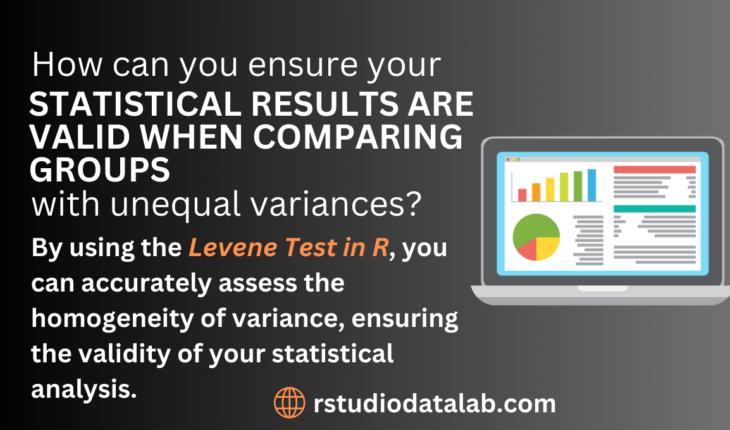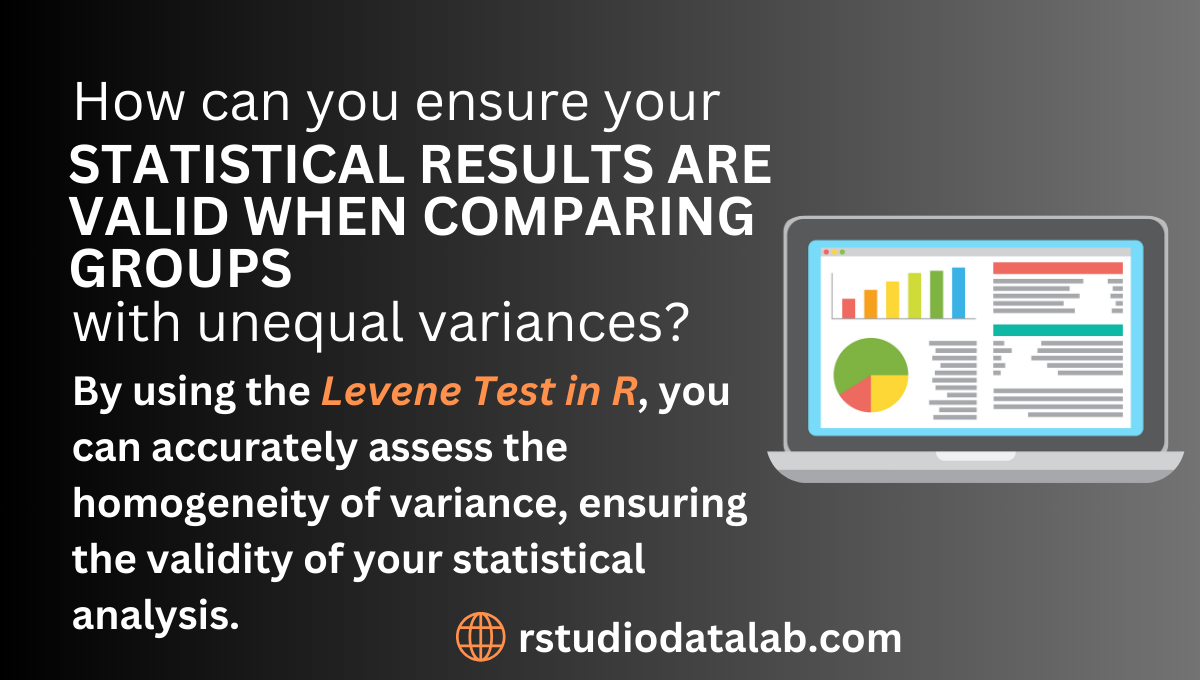Want to share your content on R-bloggers? click here if you have a blog, or here if you don’t.
When working with statistical data, ensuring that certain assumptions are met is critical to the validity of your results. One such assumption is the homogeneity of variance, which refers to the idea that the variability within groups should be consistent across all groups being compared. But how do you test this assumption effectively?
Levene’s Test in R is a robust statistical test and is a go-to solution for researchers and data analysts who want to easily verify this assumption. This article’ll explore the what, why, and how of using the Levene Test in R, including step-by-step instructions and practical examples.
Key Points
- The Levene Test is used to assess the homogeneity of variances across
groups. - Proper data preparation and assumption validation are crucial.
- R offers robust tools like
leveneTest()in thecar
package for implementation. - Visualization adds depth to variance
analysis. - Based on data characteristics, alternatives like Bartlett’s and
Fligner-Killeen Tests should be considered.
Statistical analysis often requires comparing data from different groups to
determine if they follow similar patterns. One critical assumption in many
tests, like ANOVA,
is the homogeneity of variances. The Levene
Test, a statistical procedure designed to test this assumption, ensures
that group variances are equal before further analysis.
Table of Contents
| Aspect | Details |
|---|---|
| Purpose | Tests the null hypothesis that variances are equal across groups. |
| Function in R | leveneTest(response ~ group, data = dataset) |
| Assumptions |
|
| Interpretation | A p-value < 0.05 indicates significant differences in variances among groups. |
| Alternative Tests |
|
| Case Studies |
|
Understanding the Levene Test
The accuracy of statistical methods like ANOVA or regression hinges on equal variances across groups. Ignoring variance differences can lead to incorrect results, compromising the reliability of your conclusions. The Levene Test offers a robust way to validate this assumption, making it indispensable for researchers and students analyzing data in R programming or other statistical tools.
What is the Levene Test?
The Levene Test is a statistical method for assessing the equality of variances across two or more groups. It evaluates whether the variability in data is consistent across categories, which is a fundamental assumption in many parametric tests. The Levene Test determines whether groups exhibit similar variability by comparing deviations from the mean (or median).
Related







